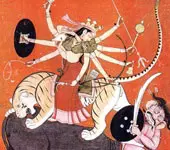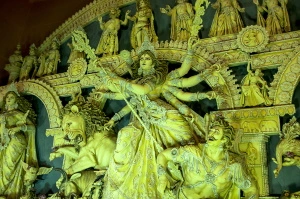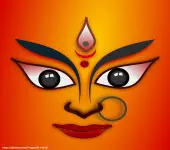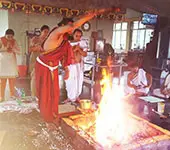Seetharama Moola Mantra
61.6K
Likes
486
Comments
Lyrics
(Click here to read more)
हुं जानकीवल्लभाय स्वाहा hum jaanakeevallabhaaya svaahaa....
Lyrics
(Click here)
हुं जानकीवल्लभाय स्वाहा
hum jaanakeevallabhaaya svaahaa
Recommended for you
Shakradi Stuti- Part 1
 Click here to know more..
Click here to know more..
Katyayani was an epitome of prema bhakti
 Click here to know more..
Click here to know more..
Kali Kavacham

atha vairinaashanam kaaleekavacham. kailaasa shikharaarood'ham shankaram varadam shivam. devee paprachchha sarvajnyam sarvadeva maheshvaram. shreedevy....
Click here to know more..
Mantras
Mantras
Click on any topic to open
- 449 Panchamukha Hanuman Mantra - Channel Inner Strength
- 448 Secure with Pratyangira Mantra for Protection
- 447 Krishna's Blessings: Path to Happiness
- 446 Narasimha Mantra: Peace & Reconciliation
- 445 Debt Relief Dattatreya Mantra
- 444 Purity of Mind and Spiritual Growth with Hanuman Mantra
- 443 Wealth Attraction: Prosperity Mantra
- 442 Manifest Blessings: Dattatreya Mantra
- 441 Narasimha Mantra: Shield Against Harm
- 440 Krishna Mantra for Elevating Marital Life and Perfect Bonding
Please wait while the audio list loads..
30
Ganapathy
Shiva
Hanuman
Devi
Vishnu Sahasranama
Mahabharatam
Practical Wisdom
Yoga Vasishta
Vedas
Rituals
Rare Topics
Devi Mahatmyam
Glory of Venkatesha
Shani Mahatmya
Story of Sri Yantra
Rudram Explained
Atharva Sheersha
Sri Suktam
Kathopanishad
Ramayana
Mystique
Mantra Shastra
Bharat Matha
Bhagavatam
Astrology
Temples
Spiritual books
Purana Stories
Festivals
Sages and Saints
26
15
13
Copyright © 2024 | Vedadhara | All Rights Reserved. | Designed & Developed by Claps and Whistles
